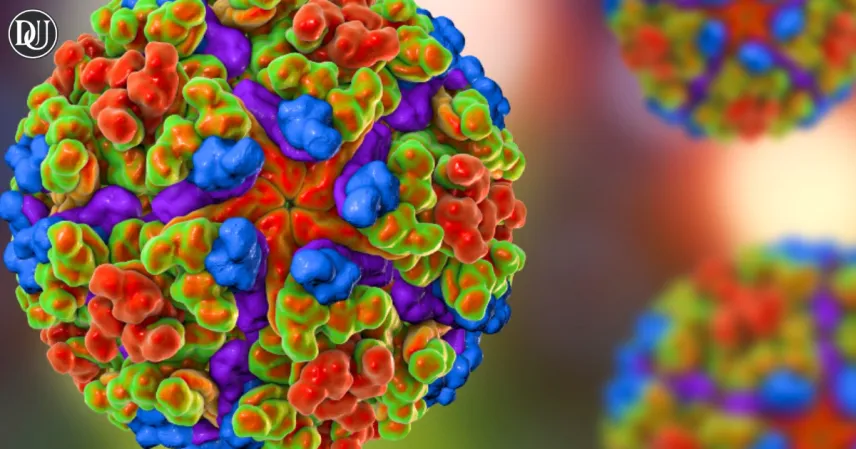Chikungunya, that mosquito-borne virus, is really making headlines again, apparently spreading pretty actively in places like China. It just randomly popped into my head, you know, thinking about how connected everything is globally, and then the CDC warning came up. It’s not a new thing, this virus, but it can be seriously nasty if you get it, causing some truly debilitating joint pain that, honestly, sticks around way longer than you’d ever want a fever to. It’s one of those things you don't really think about until an official body like the CDC starts issuing travel alerts, and then suddenly you're like, wait, what exactly is that?
What's This Virus Even About? 🦟
Basically, chikungunya is caused by a virus transmitted to humans by infected mosquitoes. The name itself, "chikungunya," comes from a word in the Kimakonde language meaning "to become contorted," which, when you hear about the symptoms, makes a lot of sense. People infected often end up bent over in pain. It’s not something you want to catch, that’s for sure. I mean, we're talking about a virus that thrives in tropical and subtropical regions, but with global travel, it just shows how easily these things can pop up pretty much anywhere. It's a real wake-up call, if you ask me, about how health risks aren't confined by borders anymore.
The Main Symptoms: Beyond Just a Fever 🤕
The symptoms for chikungunya can be pretty similar to dengue or Zika at first glance, which sometimes makes it tricky to diagnose. But there's a key difference: the joint pain. Seriously, it’s intense. People report severe joint pain, often in the hands and feet, which can last for weeks, months, or in some cases, even years after the initial infection clears up. Imagine that—your joints just aching persistently. Beyond that, you've got the usual suspects like a sudden onset of fever, muscle pain, headache, nausea, and general fatigue. Some people might also develop a rash. You know how some illnesses just drain you? This one sounds like it takes it to a whole new level with the chronic joint issues. It's not just a bad cold, or even a typical flu. It's a lot more than that.
Why China is on the CDC's Radar 🌏
The CDC, you know, just put out this Level 2 travel alert specifically for China, particularly focusing on the Guangdong Province. That means there's an increased risk of exposure, and travelers need to take enhanced precautions. It’s not a total 'don't go there' warning, but it’s definitely saying "be very, very careful." This kind of alert is basically telling you to wear long sleeves, use repellent, all that jazz, to avoid mosquito bites. It’s interesting how these outbreaks tend to happen in specific regions and then, potentially, spread if not contained. The fact that the CDC felt it necessary to issue this kind of warning, it tells you they're seeing enough activity to be concerned. Honestly, it makes you think about travel differently, doesn't it? Like, what other hidden health risks are out there?
How It Spreads: Tiny Wings, Big Problem 🦟
This virus is primarily spread through the bites of infected Aedes mosquitoes – specifically, Aedes aegypti and Aedes albopictus. These are the same little guys that can transmit dengue and Zika, which is kind of ironic, really, since they're often found in urban and suburban areas. They're active during the day, which is a bit different from some other mosquito species that primarily bite at night. So, just because it's daytime doesn't mean you're in the clear. And here’s the thing about mosquitoes: they breed in standing water. Even a tiny bit of water in a forgotten flower pot or an old tire can become a breeding ground. It makes you realize how much our environment plays a role in public health, doesn't it? It's not just about what's in the air, sometimes it's literally just puddles.
Dealing With It and Staying Safe 🛡️
Here’s the kicker: there’s no specific antiviral treatment for chikungunya. It's basically about managing the symptoms. That means rest, fluids, and over-the-counter pain relievers to help with the fever and joint pain. Sounds simple, but when the pain is severe and chronic, that's a tough pill to swallow, literally and figuratively. So, prevention is absolutely, unequivocally key. If you're traveling to an affected area – or even if you live somewhere these mosquitoes are common – you need to be really diligent. Think mosquito repellent with DEET or picaridin, wearing long-sleeved shirts and pants, and getting rid of any standing water around your home. You know, the usual mosquito precautions, but elevated. It's not about being paranoid, just smart, especially when something like chronic joint pain is on the line.
Thinking About Global Health Risks 🤔
Honestly, these kinds of outbreaks, whether it's chikungunya or something else, really highlight how interconnected our world is becoming. A virus pops up in one part of the globe, and with so many people traveling internationally, it’s not long before it could be anywhere. It shifts your perspective on public health, I think. It’s not just about local issues anymore; it's about global vigilance and cooperation. You see why organizations like the CDC are so crucial, constantly monitoring and issuing warnings. It’s a constant battle, basically, to stay ahead of these things. Could be wrong, but it feels like we’re going to see more of these kinds of global health challenges, not fewer, moving forward. It’s a complex world out there, right?










